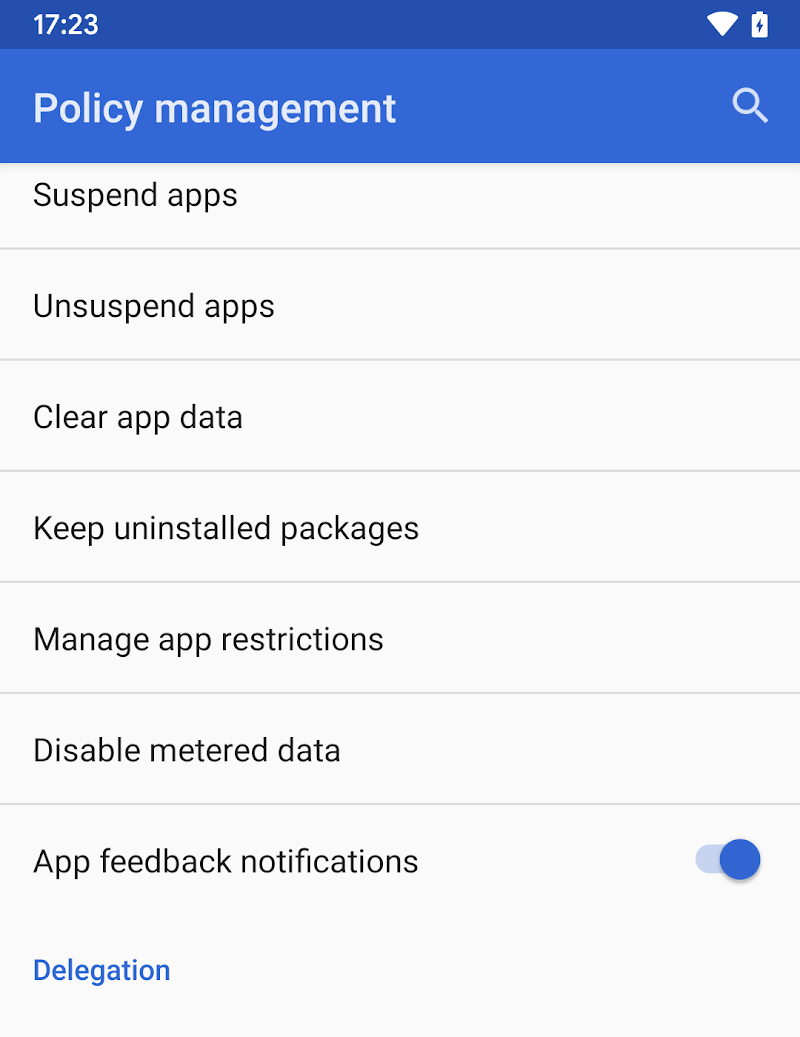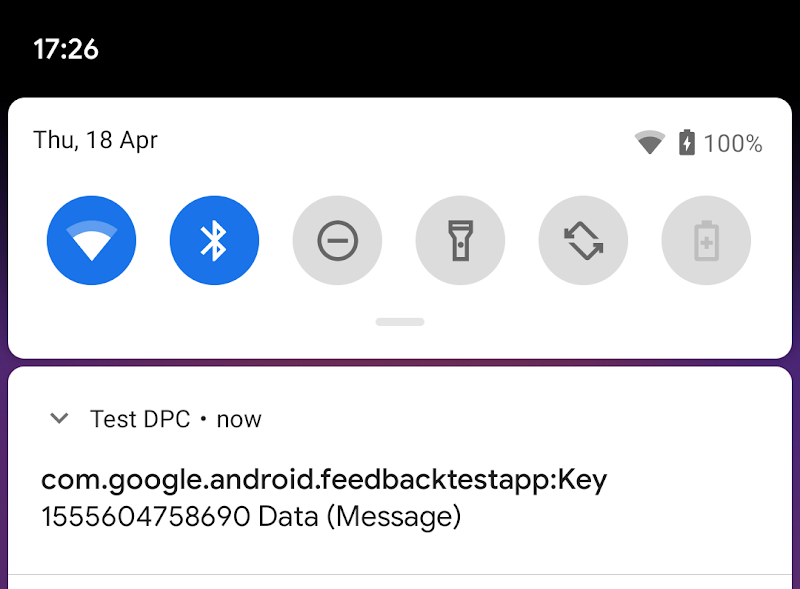إعداد اختبارات الوحدة
يعرض هذا القسم أمثلة على كيفية إعداد اختبارات الوحدات للتأكّد من تفاعل تطبيقك مع. الرئيسية كما هو متوقع.
الخطوة 1: إعداد الصفوف لقبول KeyedAppStatesReporter كمَعلمة
بدلاً من الاتصال بـ "create()" مباشرةً، عدِّل صفوفك للموافقة.
KeyedAppStatesReporter كمعلمة كما في المثال BatteryManager
الفئة أدناه:
Kotlin
class BatteryManager(val reporter:KeyedAppStatesReporter) { fun lowBattery(battery:Int) { reporter.setStatesImmediate( hashSetOf(KeyedAppState.builder() .setKey("battery") .setSeverity(KeyedAppState.SEVERITY_INFO) .setMessage("Battery is low") .setData(battery.toString()) .build())) } }
Java
public class BatteryManager { private final KeyedAppStatesReporter reporter; public BatteryManager(KeyedAppStatesReporter reporter) { this.reporter = reporter; } public void lowBattery(int battery) { final Collectionstates = new HashSet<>(); states.add(KeyedAppState.builder() .setKey("battery") .setSeverity(KeyedAppState.SEVERITY_INFO) .setMessage("Battery is low") .setData(Integer.toString(battery)) .build(); reporter.setStatesImmediate(states); } }
بعد ذلك، استخدِم KeyedAppStatesReporter.create للحصول على مثيل لاجتيازه
أينما يتم إنشاء BatteryManager.
الخطوة 2: إضافة مكتبة اختبار الملاحظات للمؤسسات إلى ملف build.gradle
أضِف التبعية التالية إلى واجهة
ملف build.gradle:
dependencies {
testImplementation 'androidx.enterprise:enterprise-feedback-testing:1.0.0'
}
الخطوة 3: إنشاء "FakeKeyedAppStatesReporter" وتمريره إلى صفك
Kotlin
val reporter = FakeKeyedAppStatesReporter(); val batteryManager = BatteryManager(reporter);
Java
FakeKeyedAppStatesReporter reporter = new FakeKeyedAppStatesReporter(); BatteryManager batteryManager = new BatteryManager(reporter);
الخطوة 4: تأكيد التفاعلات مع "FakeKeyedAppStatesReporter"
على سبيل المثال، للتحقّق من عدم تحديد أي حالات:
Kotlin
assertThat(reporter.keyedAppStates).isEmpty();
Java
assertThat(reporter.getKeyedAppStates()).isEmpty();
أو أنّه تم طلب تحميل حالة معيّنة:
Kotlin
assertThat(reporter.uploadedKeyedAppStatesByKey["battery"]).isNotNull()
Java
assertThat(reporter.getUploadedKeyedAppStatesByKey().get("battery")).isNotNull();
إرسال ملاحظات اختبارية إلى وحدة التحكّم بسياسة الجهاز (DPC)
نموذج وحدة التحكّم بسياسة الجهاز تسمى وحدة التحكّم بسياسة الجهاز (Test DPC)، وهي قادرة على تلقّي ملاحظات التطبيقات ومتاحة التنزيل.
الخطوة 1: تثبيت وحدة التحكّم بسياسة الجهاز (DPC) الاختبارية
ثبِّت أحدث إصدار من اختبار وحدة التحكّم بسياسة الجهاز (DPC). من "متجر Play". بعد ذلك، اضبط وحدة التحكّم بسياسة الجهاز (DPC) الاختبارية كمشرف للجهاز:
adb shell dpm set-device-owner com.afwsamples.testdpc/.DeviceAdminReceiver
الخطوة 2: تفعيل إشعارات ملاحظات التطبيق
في قائمة Test DPC (اختبار وحدة التحكُّم بسياسة الجهاز)، فعِّل إشعارات ملاحظات التطبيق.

شغِّل حدثًا يتم فيه ضبط حالة التطبيق المقسَّم بمفتاح. في حال إتمام الإجراء، ستعرض وحدة التحكّم بسياسة الجهاز (DPC) التجريبية. الملاحظات في الإشعارات:


